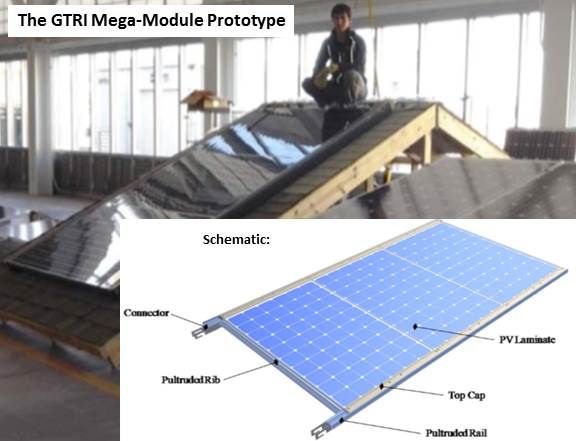Integrated racking and pre-assembled rooftop systems are emerging as ways to save time and money in solar installation.
Recent time-and-motion studies of solar installations conducted by DOE’s SunShot BOS Cost Reduction Program suggest that “a radical transformation of the installation process” is possible, according to principal investigator Joseph Goodman of the Georgia Tech Research Institute.
“Integrated racking is that radical transformation," Goodman said.
“Racking and mounting, at $0.16 per watt, is one of the single largest cost categories for benchmarked rooftop residential installations in the U.S.,” the study reported, and could have "a $0.12 per watt impact on the total installed cost.”
Big cost reduction opportunities can come from “eliminating the plethora of little nuts, bolts, wires, clips, pieces and parts that don’t add any functional value to the system, but still need to be assembled on the rooftop,” according to Cinnamon Solar CEO Barry Cinnamon, a veteran installer. The next generation of racking systems should have built-in components and be more standardized, Cinnamon added. “Zep did standardized racking so well that SolarCity bought" the company.
Structural integration combines the module, the rail, and perhaps the interface to the roof, Goodman said. Zep and American Precision Solar were early practitioners.
In the Zep system, developed in the 1990s, grooves are built into the modules’ frames at the factory interlock, eliminating the need for mounting railings, according to Zep Solar EVP Daniel Flanigan.
American Precision Solar hit on the strategy of substituting $15-per-hour factory labor for $85-per-hour union electrician labor in the early 2000s to cut costs significantly, according to company founder/owner Mike Wood. Trinity Solar developed a pre-assembled rooftop solution with AP Solar in 2009. Its non-module cost is now at $0.18 per watt, Wood said, and the company is considering further innovations that could take that down to $0.13 per watt.
Electrical integration pre-establishes the bonding path and electrical connectors between modules at the factory or the warehouse, Goodman said.

SunLink has had a pre-panelized solution since 2008. The first iteration of the process took place at the installation site, and later versions were developed that could be carried out at the warehouse, according to SunLink VP Yury Reznikov. The company has since integrated “wire management” and has developed improved transport and handling procedures.
“We ship in four module units of around 1 kilowatt each,” Reznikov said. “The present [focus] is [figuring out] how to take the labor off the roof. We are moving in the direction of an integrated system shipped from the module manufacturer to warehouses and then directly to the installation site.”
Goodman’s group at Georgia Tech Research Institute has patented and is testing a comprehensively integrated system it calls a “mega-module.” It integrates multiple PV laminates within a composite frame, eliminating the aluminum framing system altogether. The composite is non-conductive, eliminating electrical bonding and grounding concerns.
“It starts to change a lot of things,” Goodman said. “If the factory where mega-modules are made is ISO-certified and the products used are UL-certified, the completed system could require a greatly minimized inspection, and the inspector might not even have to go onto the roof.” Solar’s future could be “three, four, or five 1-kilowatt units on a rooftop.”

Neither Flanigan nor Wood sees the mega-module concept as being practical. It could cause shading difficulties or wasted roof space, Wood said. “What is important now is standardization,” Flanigan said, noting that the larger size of 1-kilowatt units could create logistics obstacles.
It does require dealing with shipping and transportation logistics, Reznikov acknowledged. It also requires getting the size right. “A four-module unit may be easy to handle, but an eight-module or twelve-module unit could be too difficult and expensive to move. Now it seems like bigger is better, but that might not always be true.”
Silicon Energy's unique glass-on-glass module design is a form of supply chain integration. “Everything except the wire and conduit to the inverter is delivered to the site, and it is assembled there by the installer,” said company spokesperson Stu Frothingham.
Trina and Solar World are also working with glass-on-glass modules, but only Silicon Energy is doing it in an integrated way, Frothingham said. “Glass-on-glass modules will be the direction of the industry as the price comes down.”
SunPower’s T5 product, as well as the Solon and First Solar systems, all integrate at the supply-chain level, Goodman said.
Andalay Solar, VeriSol and Cinnamon's startup are also working on integrated concepts, and competing strategies are being developed by companies like PanelClaw and Renusol.



